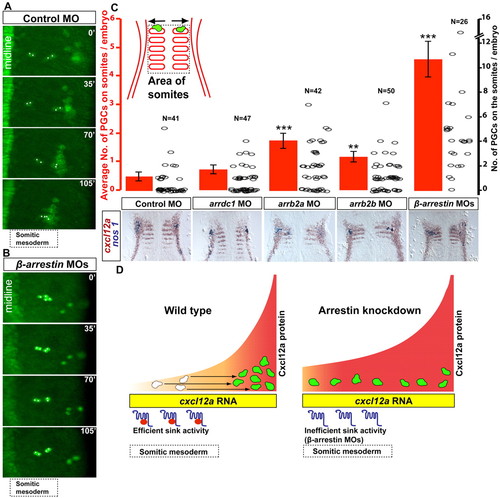
Role of β-arrestins in discrimination between Cxcl12a expression domains. (A,B) Snapshots from supplementary material Movie 5 (A) and Fig. S6 (B). In early somitogenesis stages, PGCs (asterisks) specified close to the midline migrate laterally (A). In an embryo lacking β-arrestin function (B), this movement is not observed. (C) β-arrestins promote migration of PGCs away from the somites. Red bars (y-axis on left) indicate the average number of cells remaining in the somites; error bars indicate s.e.m. The distribution of the results is indicated by circles (y-axis on right); N, the number of embryos analyzed; **P<0.05, ***P<0.001, Student’s t-test. Bottom panels show examples of in situ hybridizations using nanos1 (nos1; blue, PGCs) and cxcl12a (brown) probes used to generate the graphs. (D) A model for PGC migration during early somitogenesis in wild type (left) and in embryos compromised for β-arrestins (right). The sink function of Cxcr7b (purple), aided by β-arrestins (red ellipsoid), converts uniform cxcl12a mRNA expression into a chemotactic Cxcl12a gradient, directing the PGCs to the right. In the absence of β-arrestins, Cxcr7b function is compromised, increasing Cxcl12a levels in the forming somites and hindering the migration of PGCs towards their target.
|

